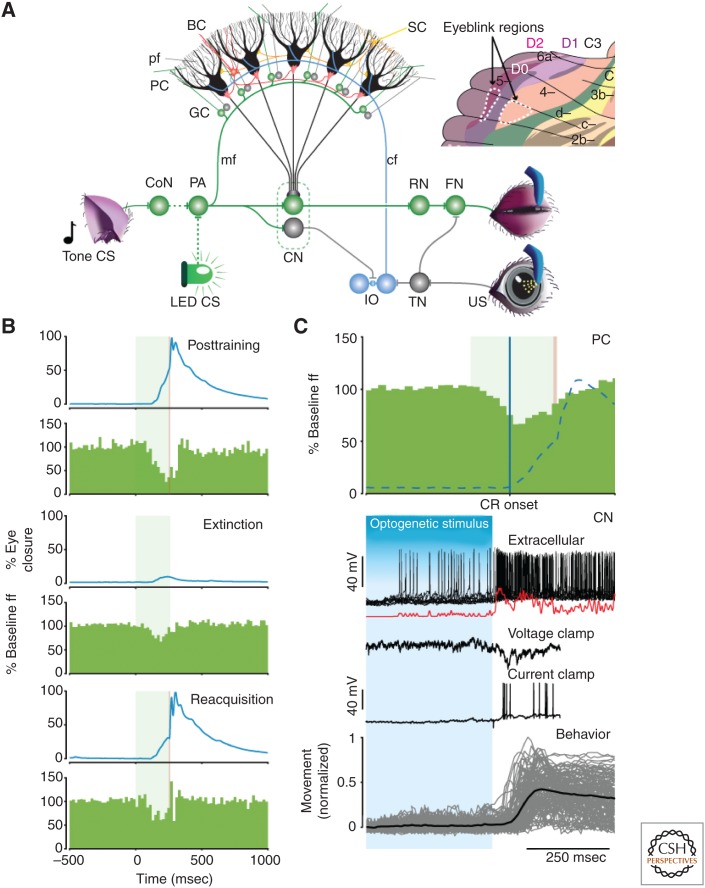Figure 6.
Eyeblink circuit and role of simple spike suppression. (A) During eyeblink conditioning, a conditioned stimulus (CS), such as a tone or LED light, is repetitively paired with an unconditioned stimuli (US), such as an airpuff, to learn a well-timed conditioned response (CR). CS and US sensory information converges at zebrin-negative Purkinje cells (PCs) in D0 and C3 (see inset) through the mossy fiber (mf)–granule cell (GC)–parallel fiber (pf) pathway and the climbing fibers (cfs) derived from the inferior olive (IO), respectively. Although the mossy fibers relay information on the CS from the pontine area (PA), the climbing fibers mediate efferent copies of signals evoked in the direct eyeblink reflex loop, which is formed by the orbital branch of the trigeminal nerve, trigeminal nucleus (TN), facial nucleus (FN), and eyelid muscle. When a fixed temporal relationship between parallel fiber and climbing fiber activation emerges, the same parallel fiber input starts to evoke a simple spike suppression that disinhibits the cerebellar nuclear (CN) cells, and consequently causes the eyelid to close before the US is about to occur. (B) Example of mean eyelid behavioral traces and simple spike frequency histograms of a mouse Purkinje cell from lobule HVI (zebrin-negative D0 zone) after training, extinction, and reacquisition (top to bottom). Note the concomitant changes in simple spike suppression and amplitude of the CRs. The green and red bands in the background depict CS and US duration, respectively. (C) (Top) Simple spike suppression precedes CR onset (blue line) and covaries with its course (dashed line). (Bottom) A rapid drop in Purkinje cell activity after stopping optogenetic stimulation elicits rebound burst activity in CN neurons (extracellular recording in vivo). The excitatory events in voltage and current clamp recordings of the same cell in vivo following optogenetic Purkinje cell stimulation show that this bursting may be facilitated by climbing and/or mossy fiber collaterals. Ultimately, CN rebound activity can reliably evoke a behavioral response. The data described under C are obtained from different experiments, but aligned at the same time scale to facilitate understanding of the course of events with respect to each other. CoN, cochlear nucleus; RN, red nucleus. (From Witter et al. 2013; modified, with permission, from the authors.)

